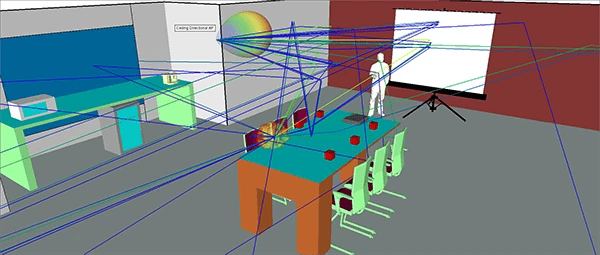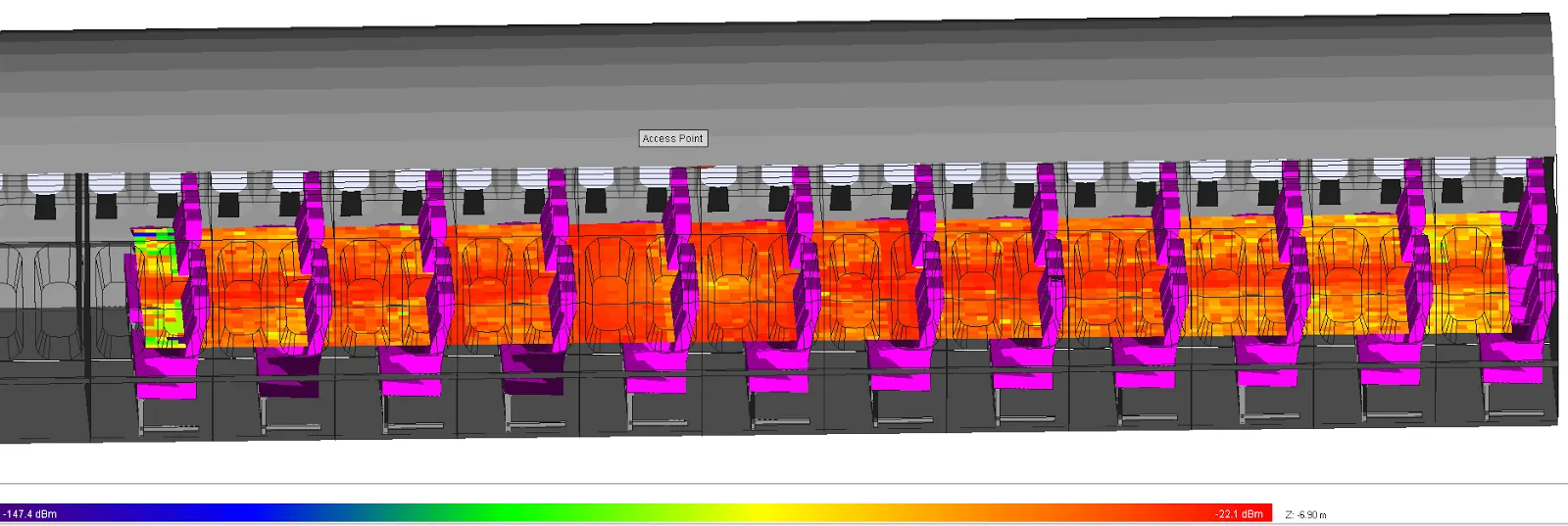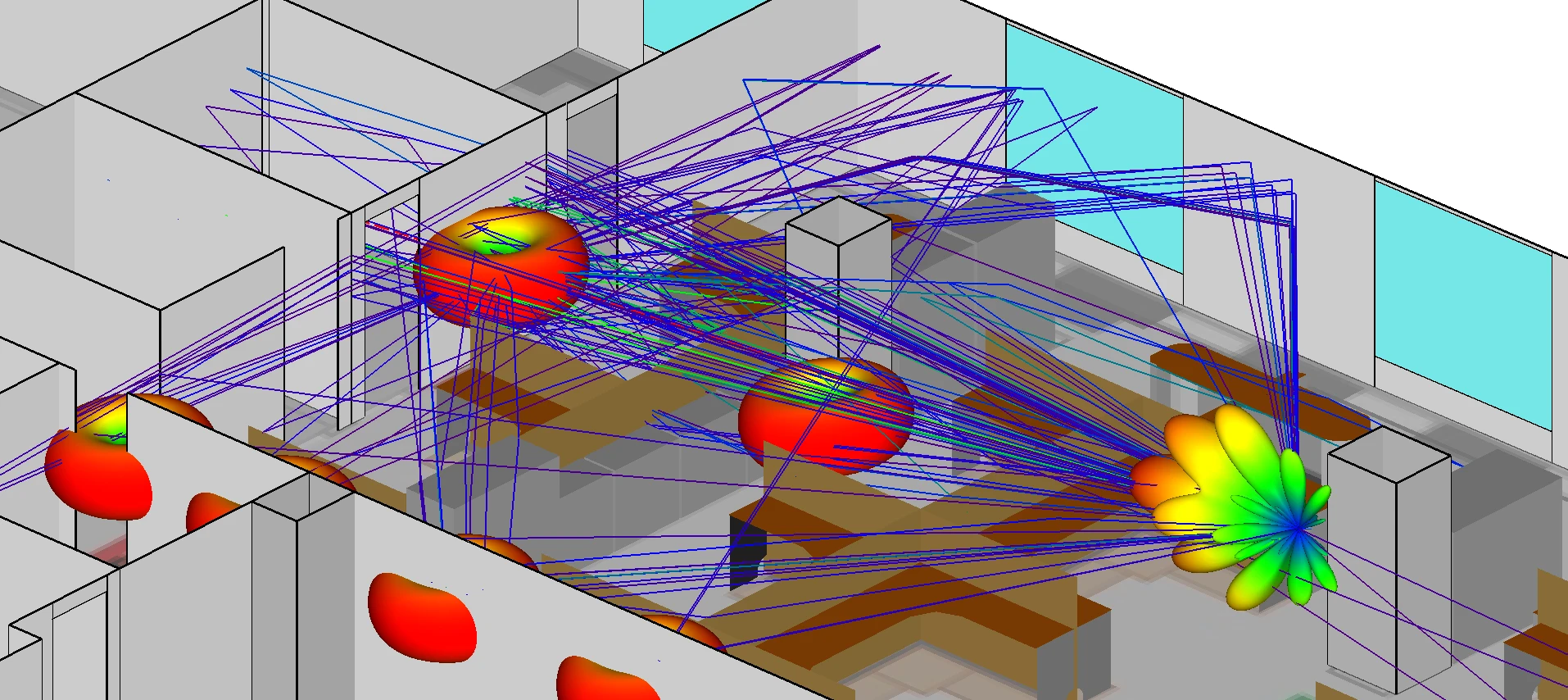- Products & Solutions
- Wireless InSite
- Outputs
Outputs
Users have quick access to outputs such as received power, propagation paths, and path loss. These ASCII-based files can be plotted in the tool or easily post-processed externally.

Using Wireless InSite's options for placing receiver points within a scenario, it is easy to generate coverage map displays in the software's project view. Coverage maps can be made for received power, path loss/gain, E-field magnitude, mean time of arrival, delay spread, and many other outputs. The scale bar offers continuous and discrete options as well as control over the display range, values to display, and opacity.
The physics-based propagation models are able to predict the paths by which energy travels from the transmitting to the receiving antenna. Propagation paths through doors and windows, reflection from, and transmission through walls can be easily visualized in the graphical interface.
Wireless InSite writes out and saves output files in ASCII format for quick post-processing. The path information is written out in an SQLite database along with MIMO outputs to CSV files.

An example list of outputs include:
- Received power and path loss
- S-parameters
- Propagation paths
- Complex Impulse Response
- E-field magnitude and phase
- Time of Arrival and Delay Spread
- Angle of Departure and Arrival
- H-matrix (MIMO only)
- Dynamic mobility scenarios: results vs. time


Communication Systems
Apply MIMO techniques, and calculate Signal-to-Interference-plus-Noise Ratio (SINR), data throughput, Shannon capacity, and Bit Error Rate (BER) for each communication channel. Choose from 5GNR, LTE, and various WiFi generations for analysis. Sample outputs from communications analysis include:- Power after MIMO beamforming
- Signal-to-Interference-plus-Noise Ratio (SINR)
- Throughput or Shannon Capacity
- Bit Error Rate (BER)
- Enhancement from MIMO spatial multiplexing (MXN MIMO)
Maximum Permissible Exposure (MPE)
Wireless InSite’s Maximum Permissible Exposure (MPE) module provides the ability to calculate MPE values and compare them to the safety thresholds defined by the IEEE Standard C95.1-2005. The user may conduct a hazard assessment and visually display the MPE relevant quantities, as well as their relation to the MPE thresholds. This capability allows for both stationary and moving transmitters, multi-pulse waveforms, and includes the aggregation of exposure over time. MPE outputs are currently only available from the X3D propagation model.

Save time and reduce costs.
Contact Remcom today for a customized solution to your most complex electromagnetic challenges.
Request a Quote